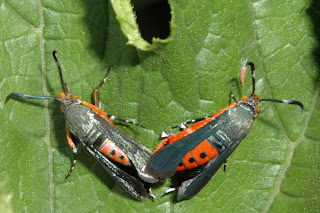Mealworms are the larval form of the mealworm beetle, Tenebrio molitor, a species of darkling beetle. Like all holometabolic insects, they go through four life stages: egg, larva, pupa, and adult. Larvae typically measure about 2.5 cm or more, whereas adults are generally between 1.25 and 1.8 cm in length. Mealworms are typically used as a food source for reptile, fish, and avian pets. They are also provided to wild birds in bird feeders, particularly during the nesting season, when birds are raising their young and appreciate a ready food supply. Mealworms are high in protein, which makes them especially useful as a food source. They are also commonly used for fishing bait.
Mealworms
Mealworms
Mealworms
Mealworms



















































